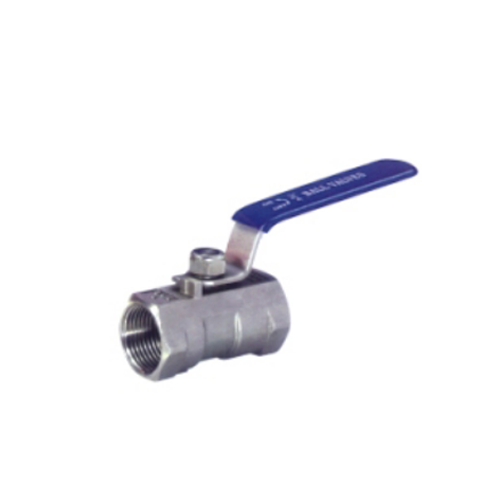
Gate Valve Design Features for Reliable Operation
Introduction
Gate valves are among the most widely used valves in industrial applications due to their ability to provide a tight seal and minimal pressure drop when fully open. They are primarily designed for on/off service rather than flow regulation. To ensure reliable operation, gate valves must incorporate several key design features that enhance durability, sealing performance, and ease of maintenance.
This article explores the critical design aspects of gate valves that contribute to their reliable operation, including materials, sealing mechanisms, stem designs, bonnet configurations, and operational considerations.
---
1. Body and Bonnet Design
1.1 Body Construction
The body of a gate valve is the primary pressure-containing component. It must withstand high pressures, temperature variations, and corrosive environments. Common materials include:
- Carbon Steel: Suitable for general-purpose applications.
- Stainless Steel: Offers corrosion resistance in harsh environments.
- Alloy Steel: Used in high-temperature and high-pressure applications.
- Ductile Iron: Provides strength and durability at a lower cost than steel.
- Bronze and Brass: Used in low-pressure and non-corrosive applications.
The body is typically designed with a full-bore or reduced-bore configuration. Full-bore valves minimize pressure drop, while reduced-bore valves are more compact and cost-effective.
1.2 Bonnet Configurations
The bonnet encloses the stem and gate assembly and must provide a leak-proof seal. Common bonnet designs include:
- Bolted Bonnet: Uses bolts for a secure seal, suitable for high-pressure applications.
- Pressure-Seal Bonnet: Ideal for high-pressure and high-temperature services, where internal pressure enhances the seal.
- Screwed Bonnet: Simple and economical but limited to low-pressure applications.
- Welded Bonnet: Provides a permanent, leak-proof seal but complicates maintenance.
---
2. Gate and Sealing Mechanisms
2.1 Gate Types
The gate is the primary sealing component and comes in different designs:
- Solid Wedge Gate: A single-piece gate that provides tight sealing but may be prone to thermal binding.
- Flexible Wedge Gate: Features a slight flexibility to accommodate thermal expansion and prevent binding.
- Split Wedge (Parallel Disk) Gate: Consists of two discs that adjust independently, improving sealing in varying conditions.
- Knife Gate: Designed for thick fluids and slurries, featuring a sharp-edged gate for cutting through viscous media.
2.2 Sealing Surfaces
Reliable sealing depends on the interaction between the gate and seat surfaces. Common sealing methods include:
- Metal-to-Metal Seals: Durable but may require higher torque for tight closure.
- Resilient Seats (Elastomer-Lined): Provide bubble-tight sealing but are limited by temperature and chemical compatibility.
- Fire-Safe Seals: Incorporate secondary metal seals that maintain sealing even if the primary seal is damaged by fire.
---
3. Stem Design and Operation
3.1 Stem Types
The stem connects the actuator to the gate and must resist wear, corrosion, and mechanical stress. Common stem designs include:
- Rising Stem (OS&Y – Outside Screw & Yoke): The stem moves upward when opened, providing visual indication of valve position.
- Non-Rising Stem (NRS): The stem rotates but does not move vertically, making it suitable for confined spaces.
3.2 Stem Packing
To prevent leakage around the stem, gate valves use packing materials such as:
- Graphite Packing: Resistant to high temperatures and chemicals.
- PTFE (Teflon) Packing: Low friction and excellent chemical resistance but limited to moderate temperatures.
- Braided Packing (Aramid, Fiberglass): Provides durability and flexibility.
A gland follower or packing nut compresses the packing to maintain a tight seal while allowing smooth stem movement.
---
4. Actuation and Operational Considerations
4.1 Manual Operation
Most gate valves are manually operated using a handwheel or lever. Key considerations include:
- Gear Operators: Reduce required torque for large-diameter valves.
- Limit Stops: Prevent over-tightening, which can damage the seat or gate.
4.2 Automated Operation
For remote or high-cycle applications, gate valves can be automated using:
- Electric Actuators: Provide precise control and feedback.
- Pneumatic/Hydraulic Actuators: Offer rapid operation in high-pressure systems.
4.3 Position Indication
Reliable operation requires clear valve position feedback. Common indicators include:
- Visual Stem Position (Rising Stem)
- Limit Switches (Automated Valves)
- Position Sensors (Smart Valves)
---
5. Maintenance and Reliability Enhancements
5.1 Ease of Maintenance
Key design features that improve maintainability include:
- Top Entry Design: Allows internal inspection without removing the valve from the pipeline.
- Replaceable Seats and Seals: Extends valve lifespan by allowing worn components to be replaced.
5.2 Corrosion Protection
To enhance longevity, gate valves may incorporate:
- Coatings (Epoxy, PTFE, Galvanization)
- Cathodic Protection (for buried valves)
- Stainless Steel Trim (for corrosive media)
5.3 Testing and Standards Compliance
Reliable gate valves must meet industry standards such as:
- API 600 (Steel Gate Valves)
- API 602 (Compact Steel Gate Valves)
- ASME B16.34 (Pressure-Temperature Ratings)
- ISO 5208 (Leakage Testing)
---
Conclusion
Gate valves are critical components in industrial fluid control systems, and their reliable operation depends on thoughtful design choices. Key features such as robust body construction, effective sealing mechanisms, durable stem designs, and proper actuation contribute to long-term performance.
By selecting the right materials, sealing technologies, and maintenance-friendly designs, engineers can ensure gate valves operate efficiently in demanding environments. Compliance with industry standards further guarantees safety and reliability, making gate valves a dependable choice for isolation applications.
---
This discussion provides a comprehensive overview of gate valve design principles that enhance reliability. Future advancements may include smart valve technologies for predictive maintenance and improved materials for extreme conditions.
この Web サイトでは、お客様に最高のエクスペリエンスを提供するために Cookie を使用しています。
コメント
(0)